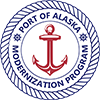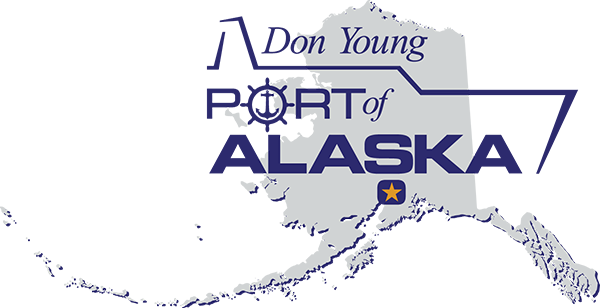A challenging environment
Port of Alaska is strategically located adjacent to Alaska’s population center and acts as the primary road, marine, air, rail and pipeline cargo distribution system. While its location is ideal for supporting the movement of goods and services, the environment presents challenges for construction.
Understanding the Environment
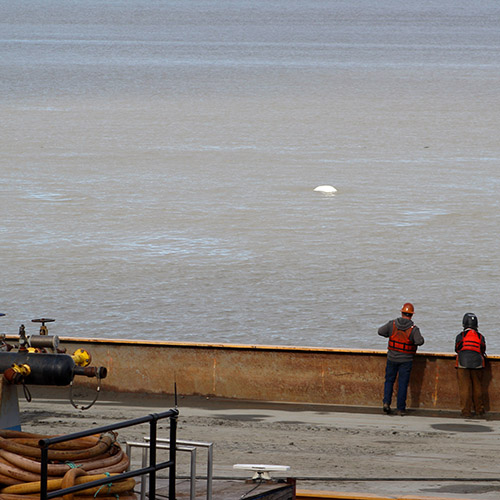
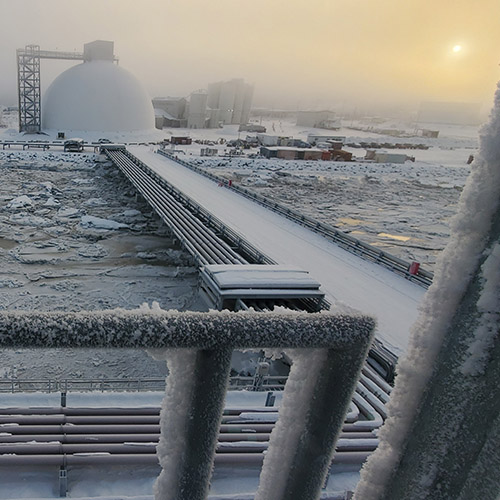
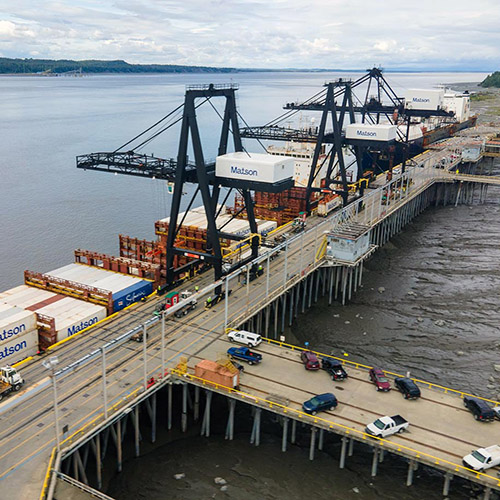

Who do we share this waterway with?
The protection of marine species is a key priority for PAMP, and development of measures to avoid, minimize and mitigate potential impacts on marine species is a critical objective. Understanding the environment we work in is an integral part of reducing the potential impacts caused by construction activities and sound pollution at Port of Alaska. Knik Arm is home to several marine mammal species that live, hunt and migrate seasonally or year-round in waters near the Port:
- Cook Inlet beluga whales
- Harbor seals
- Harbor porpoises
- Humpback whales
- Gray whales
- Orca whales
- Steller sea lions
The protection of these mammals and the ecosystem is a top priority for Port of Alaska, right alongside cost-effectiveness and timeliness.
Working with environmental laws and agencies
Modernizing Port of Alaska is a large-scale program that requires substantial consideration for local, state, and federal laws and regulations. Environmental legislation that Port of Alaska operates under includes the National Environmental Policy Act (NEPA), the Clean Water Act (CWA), the Endangered Species Act (ESA), the Marine Mammal Protection Act (MMPA), the Magnuson–Stevens Fishery Conservation and Management Act and the National Historic Preservation Act.
As part of the planning process, and to uphold its commitment to protecting upper Cook Inlet, Port of Alaska devotes considerable time and resources to applying for permits through the various agencies that issue them. Permit conditions for in-water construction under laws such as the MMPA and ESA require the Port to have a plan in place for monitoring and mitigating environmental disturbances to marine species. See the Permits Page for an overview of Cargo Terminal Replacement permits and related documents.
Designing with the environment
in mind
Analysis of noise reduction techniques is also a priority during the design process. Because Cook Inlet is home to endangered species, Port of Alaska staff worked extensively to research and design the least impactful foundation system for the new terminals as well as construction noise mitigation systems to minimize potential impacts on marine life in Knik Arm.
The design team evaluated several different types of foundation systems for new terminals including bulkheads, coffer dams, caissons, as well as varying diameters of piles (both driven and drilled). Large diameter piles were selected as the most cost efficient and least impactful foundation.
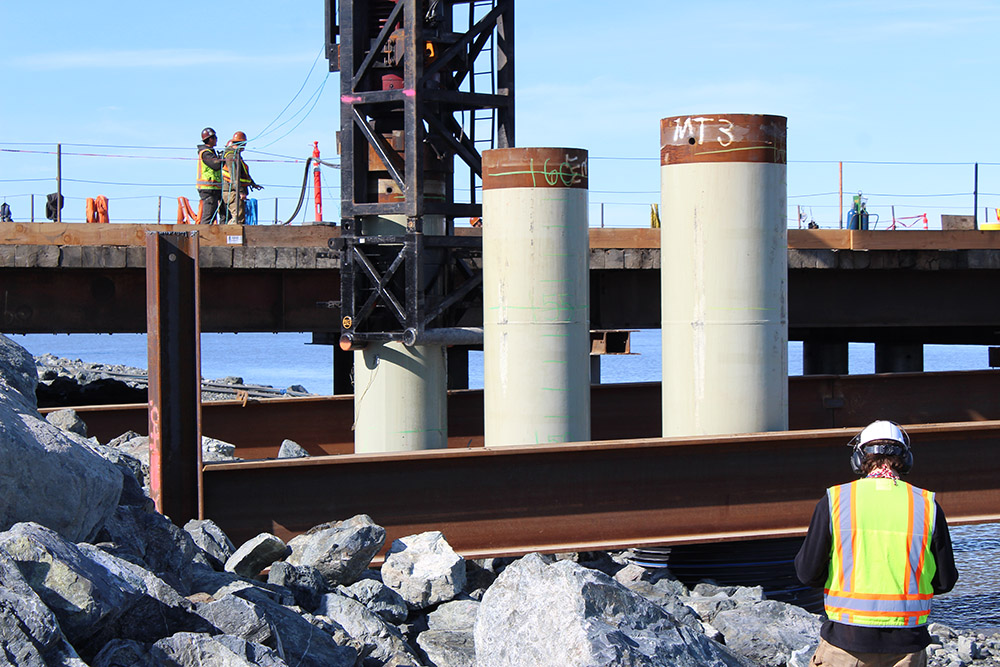
Large diameter piles and bulkhead.
Quieting construction noise to minimize potential impact to local marine life
In 2016, Port of Alaska conducted a Test Pile Program (TPP) to determine the least harmful strategy for underwater installation of support piles that is cost-efficient while still producing low levels of sound. The intent of the TPP was to evaluate pile drivability and levels of underwater sounds generated during pile driving.
During the TPP and PCT construction, the Port was also able to test and implement sound mitigation techniques. Most notably, air bubble curtains were deployed around pile driving areas to reduce sound travel. Bubble curtains create a “wall” of bubbles around the perimeter of pile-driving work. Due to the different densities of air and water, the curtains allow sound energy to be absorbed by the bubbles, reducing the force and noise that escape the work area.
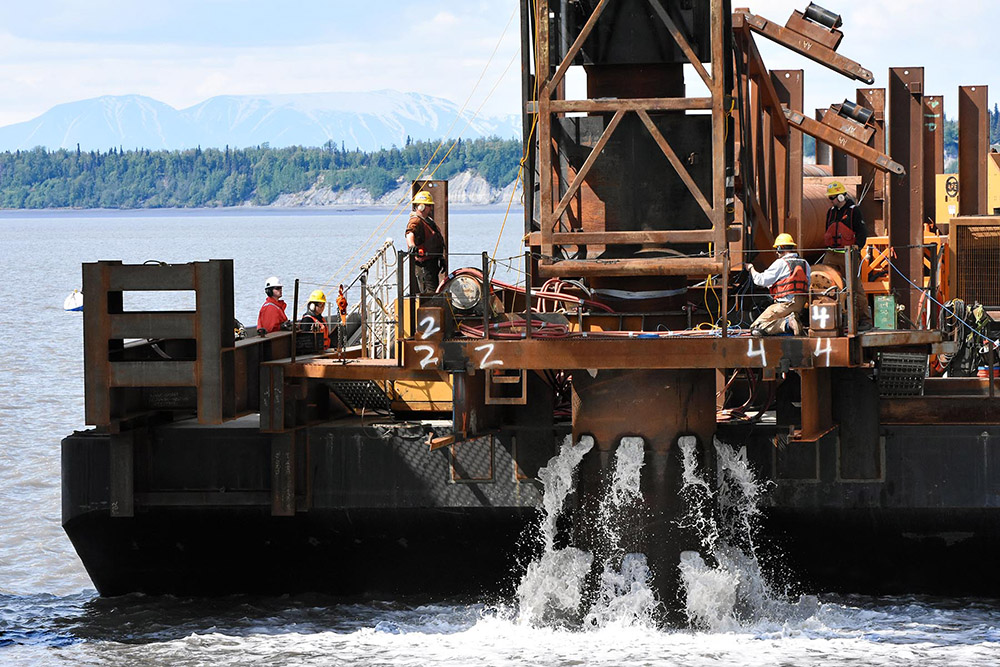
Bubble curtains were created by positioning a circular sleeve and perforated ring around piles that were being driven for the PCT.
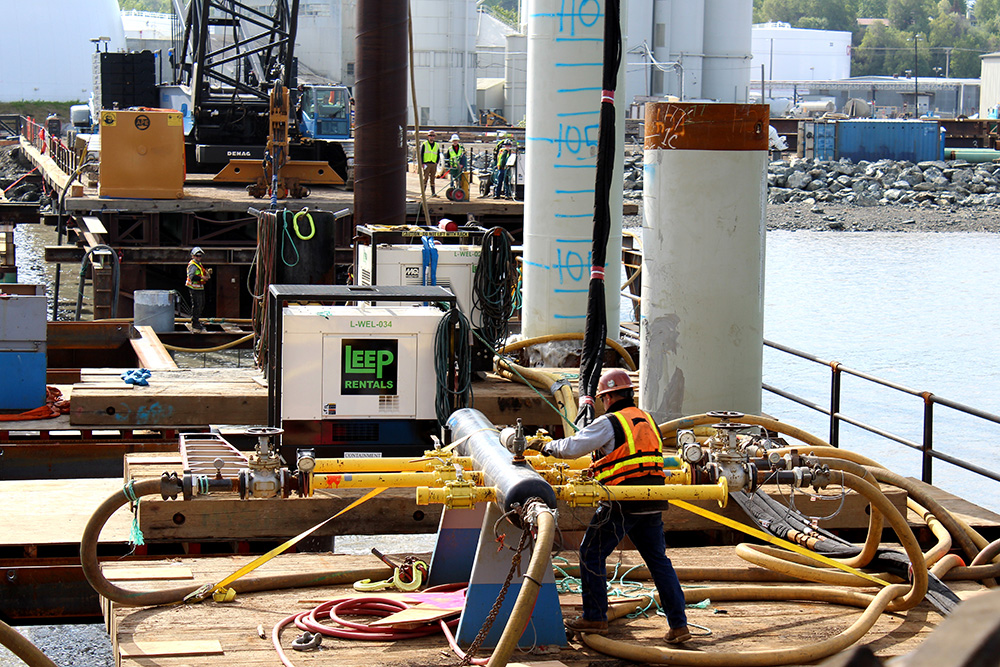
Air was pumped through the perforated ring to create a dense curtain of bubbles that diffused pile-driving noise.

Underwater hydrophones were used to monitor the bubble curtains’ effectiveness.
Mammal monitoring and informing future research
Through collaboration with the National Marine Fisheries Service and using the ESA and MMPA to inform our practices, Port of Alaska staff developed a Marine Mammal Monitoring and Mitigation Plan (4MP) with the purpose of minimizing and avoiding potential impacts of underwater noise on marine mammals.
The 4MP mobilizes trained Marine Mammal Observers (MMOs) who search for, monitor, document and track marine mammals around the Port’s construction project area. Observations of animals within certain distances of construction trigger a pause in construction until there is confirmation that the animals have left the area. The most observed species near Port of Alaska are Cook Inlet beluga whales and harbor seals. From 2020 to 2022, Port of Alaska staff recorded over 2,000 beluga whale sightings and almost 700 harbor seal sightings in the Knik Arm monitoring area. These numbers include multiple counts of the same animals from unique populations.
Data collected by Port of Alaska MMOs help inform crucial research on endangered marine mammals. Understanding the migration patterns, feeding activity and behavior of the Cook Inlet beluga whales and other marine mammals is a key part of the ongoing conservation work in the Knik Arm and the upper Cook Inlet region.
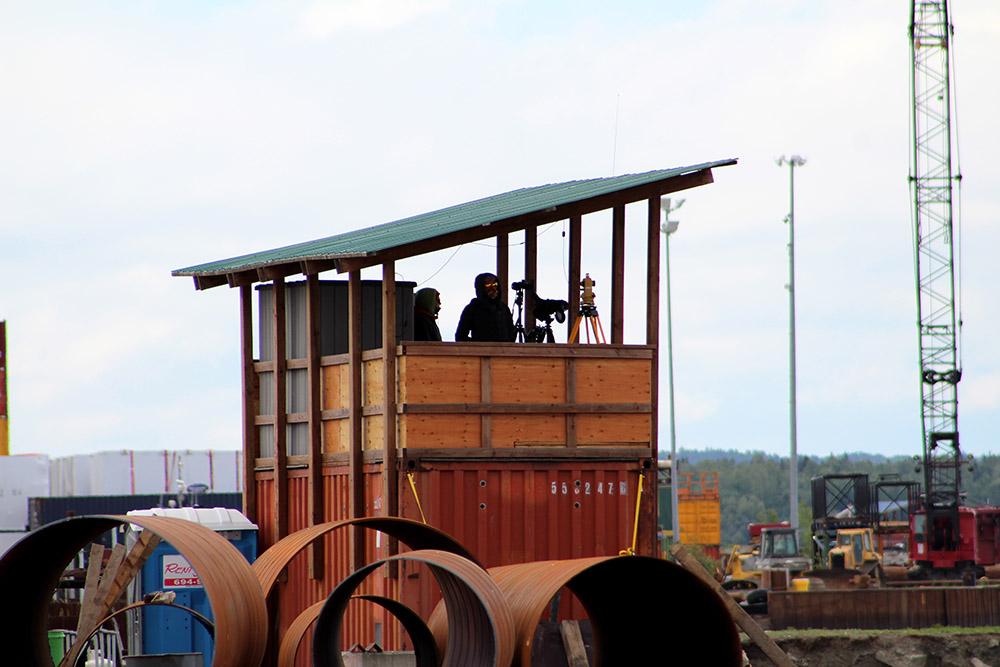
Marine mammal observers looked for beluga whales and other marine mammals from the construction site to Point Mackenzie and beyond to ‘clear the zone,’ effectively ensuring that no harm would come to the protected species during construction of the PCT.
Don Young Port of Alaska
Address:
2000 Anchorage Port Road
Anchorage, Alaska 99501
For more information or questions about PAMP, please email
portofalaska@anchorageak.gov
Copyright © 2025 Port of Alaska Modernization Program. All Rights Reserved.
